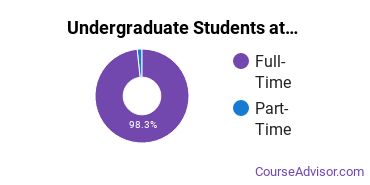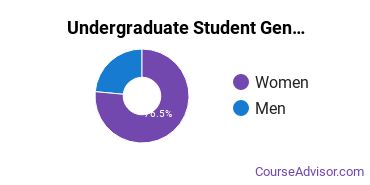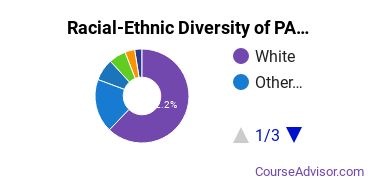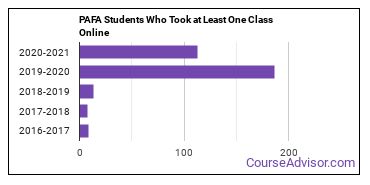Pennsylvania Academy of the Fine Arts Overview
Located in Philadelphia, Pennsylvania, Pennsylvania Academy of the Fine Arts is a private not-for-profit institution. The location of the school is great for students who enjoy the amenities of city life.
What Is Pennsylvania Academy of the Fine Arts Known For?
- PAFA has an impressive student to faculty ratio of 4 to 1.
- Students at PAFA have an easier time paying back their loans. The school's student loan default rate is only 3%, compared to the national rate of 10.1%.
- Although it may not be available for every major, the master's degree is the highest award a student can attain at PAFA.
- In <nil>, 41% of the faculty were full-time.
- On average, it takes about 4.1 years for students from PAFA to earn a bachelor's degree. This is excellent when compared to the average of 4.4 years.
Featured schools near , edit
Where Is Pennsylvania Academy of the Fine Arts?

Contact details for PAFA are given below.
| Contact Details | |
|---|---|
| Address: | 128 N. Broad Street, Philadelphia, PA 19102-1510 |
| Phone: | 215-972-7600 |
| Website: | www.pafa.org |
How Do I Get Into PAFA?
You can apply to PAFA online at: https://www.pafa.org/admissions/undergraduate/apply
Admission Requirements for PAFA
| Submission | Required? |
|---|---|
| High School GPA | Required |
| High School Rank | Neither required nor recommended |
| High School Transcript | Required |
| College Prep Program | Neither required nor recommended |
| Recommendations | Required |
| SAT or ACT Scores | Neither required nor recommended |
| TOEFL | Required |
How Hard Is It To Get Into PAFA?
Approximately 14% of accepted students are men and 86% are women. The acceptance rate for men is 78%, and the acceptance rate for women is 85%.
Can I Afford Pennsylvania Academy of the Fine Arts?
The net price is calculated by adding tuition, room, board and other costs and subtracting financial aid.
Student Loan Debt
Almost 66% of college students who graduated with the class of 2018 took out student loans, but that percentage varies from school to school. At PAFA, approximately 61% of students took out student loans averaging $5,864 a year. That adds up to $23,456 over four years for those students.
The student loan default rate at PAFA is 2.8%. This is significantly lower than the national default rate of 10.1%, which is a good sign that you'll be able to pay back your student loans.
Pennsylvania Academy of the Fine Arts Undergraduate Student Diversity

There are also 57 graduate students at the school.
Gender Diversity
Of the 119 full-time undergraduates at PAFA, 24% are male and 76% are female.

Racial-Ethnic Diversity
The racial-ethnic breakdown of Pennsylvania Academy of the Fine Arts students is as follows.

| Race/Ethnicity | Number of Grads |
|---|---|
| Asian | 4 |
| Black or African American | 7 |
| Hispanic or Latino | 3 |
| White | 74 |
| International Students | 9 |
| Other Races/Ethnicities | 22 |
Geographic Diversity
Pennsylvania students aren't the only ones who study at Pennsylvania Academy of the Fine Arts. At this time, 14 states are represented by the student population at the school.
Over 10 countries are represented at PAFA. The most popular countries sending students to the school are China, South Korea, and Iran.
Online Learning at Pennsylvania Academy of the Fine Arts
The following chart shows how the online learning population at PAFA has changed over the last few years.

Online Growth Rankings of PAFA
The average growth rate over the last four years of online students at Pennsylvania Academy of the Fine Arts was 156.9%. This is the #326 largest growth rate of all schools that are only partially online. This refers to all students at PAFA regardless of major.### Online Growth Rankings of PAFA
The average growth rate over the last four years of online students at Pennsylvania Academy of the Fine Arts was 156.9%. This is the #326 largest growth rate of all schools that are mostly online. This refers to all students at PAFA regardless of major.
When we speak of partially online, we are referring to schools whose online population is less than 50% of its total student body. Mostly online refers to those with online populations greater than or equal to 50%.
References
*The racial-ethnic minorities count is calculated by taking the total number of students and subtracting white students, international students, and students whose race/ethnicity was unknown. This number is then divided by the total number of students at the school to obtain the racial-ethnic minorities percentage.
- College Factual
- National Center for Education Statistics
- Image Credit: By Beyond My Ken under License
More about our data sources and methodologies.
Featured Schools
 Request Info
Request Info
|
Southern New Hampshire University You have goals. Southern New Hampshire University can help you get there. Whether you need a bachelor's degree to get into a career or want a master's degree to move up in your current career, SNHU has an online program for you. Find your degree from over 200 online programs. Learn More > |
